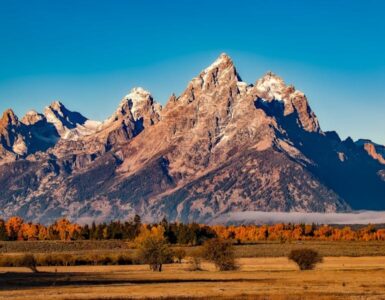The United States Forest Service has issued one of the largest RFPs in the history of the agency to carry out an ambitious plan to attract and scale forest-thinning industries in Northern Arizona.
“This is one of the largest – if not the largest – stewardship contract we’ve ever offered and it’s the first 20-year contract we’ve offered,” said Cal Joyner, Regional Forester for the Southwest for the Forest Service.
There’s an urgency to the request, Joyner said. Climate change is making wildfires more likely. Too much forest debris makes them more deadly.
“We’re hoping that we have put together a proposal that allows for industry to fully invest and create a restoration industry in Northern Arizona around our forests,” he said.
The RFP is part of a public-private partnership, known as 4FRI (Four Forest Restoration Initiative), whose goal is to ultimately restore 2.4 million acres of forest to reduce damage from wildfires and protect vital watershed that feeds Payson and metropolitan Phoenix below. It is the nation’s largest restoration ever, Joyner said.
Longest contiguous pine forest in world needs thinning
The RFP calls for awarding contracts to companies to mechanically thin 605,000 to 818,000 acres of forests in Northern Arizona. The RFP will be available to both small and large businesses and seeks proposals that are “sustainable, innovative, feasible, and cost-effective to increase the pace the scale of forest restoration.”
The Forest Service plans to spend $550 million over the next 20 years to work in four national forests: Apache-Sitgreaves, Coconino, Kaibab and Tonto. Business and industry will play a key role in this effort by harvesting, processing, and selling wood products.
With the longest contiguous pine forest in the world, northern Arizona is a prime location for reforestation industries as well as facilities that can burn woody forest debris – called biomass – and transform it into energy for the electric grid.
But currently, there is only one biomass facility in the state, NovoBio in Snowflake. It’s not nearly enough.
“The question for industry is that we have a mandate for removing a lot of biomass as well as the bio saw logs,” Joyner said. “That will be the crux of proposals coming in, how do you profitably work with the saw logs and also remove the biomass at the same time.”
After a three month pre-solicitation process, the Forest Service issued the RFP Sept. 12. Proposals are due December 16. Contracts will be awarded in April. Successful awardees will have two years to start logging and three years to become fully operational.
New RFP offers more certainty for contractors
An earlier RFP that was issued as part of phase one of the massive 4FRI project was criticized for being slow and ineffective. Efforts to attract industry were largely futile.
As a result, state and congressional leaders have leaned heavily on the Forest Service to get the process moving.
Joyner said new changes to the process should attract more interest.
Last year, Congress passed a bill that allows the Forest Service to offer longer contracts, up to 20 years, to give companies more certainty. The bill also allows the Forest Service to give preference to bidders who propose innovative solutions.
“We’ve written this very flexibly to see how that would generate the best industry response,” he said. “We’re not asking for specific industries to apply. We want businesses to come up with their own creative plans to reduce fire debris.”
The agency and other partners also have more experience this time around, Joyner said.
“Phase one of the 4FRI phase was our first 300,000-acre scale project we had ever done as an agency and we learned from it. We have a lot more financial sense, business acumen, and business experience being brought to bear on this proposal than we did with phase one. We think we’ve got a better product to offer.”
Public-private partnership to restore forests and watershed
Since 2010, the Forest Service and the other 4FRI stakeholders have spent more than $220 million in reforestation in the region.
The 4FRI project is unique in that it is the first collaborative effort of its kind. The Forest Service, U.S. Bureau of Reclamation, Arizona Commerce Authority, Arizona Department of Forestry, Salt River Project, and private organizations are working as a team to protect Arizona citizens, structures, natural areas, streams and lakes from high intensity wildfires.
For more information and to view the RFP, go to Forest Restoration.
















Add comment